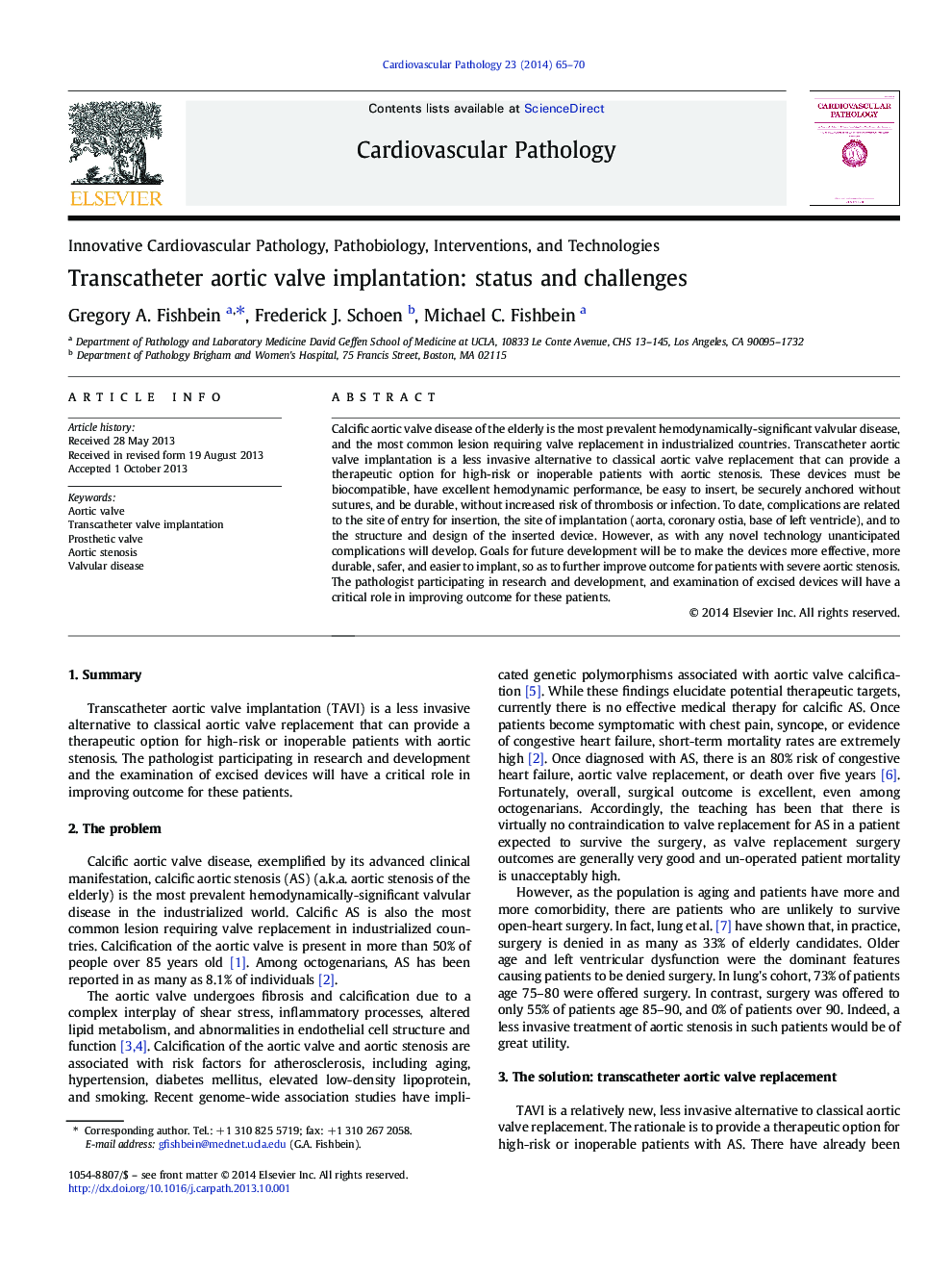| Article ID | Journal | Published Year | Pages | File Type |
|---|---|---|---|---|
| 2898701 | Cardiovascular Pathology | 2014 | 6 Pages |
Calcific aortic valve disease of the elderly is the most prevalent hemodynamically-significant valvular disease, and the most common lesion requiring valve replacement in industrialized countries. Transcatheter aortic valve implantation is a less invasive alternative to classical aortic valve replacement that can provide a therapeutic option for high-risk or inoperable patients with aortic stenosis. These devices must be biocompatible, have excellent hemodynamic performance, be easy to insert, be securely anchored without sutures, and be durable, without increased risk of thrombosis or infection. To date, complications are related to the site of entry for insertion, the site of implantation (aorta, coronary ostia, base of left ventricle), and to the structure and design of the inserted device. However, as with any novel technology unanticipated complications will develop. Goals for future development will be to make the devices more effective, more durable, safer, and easier to implant, so as to further improve outcome for patients with severe aortic stenosis. The pathologist participating in research and development, and examination of excised devices will have a critical role in improving outcome for these patients.
